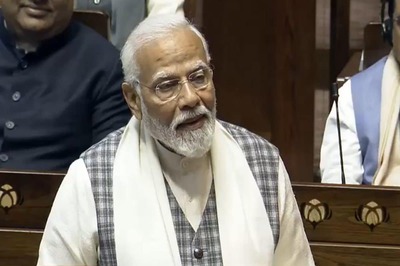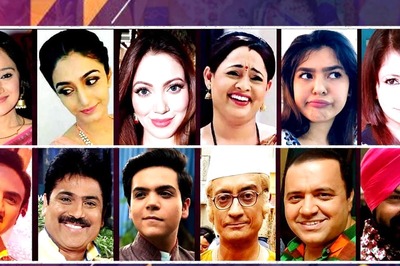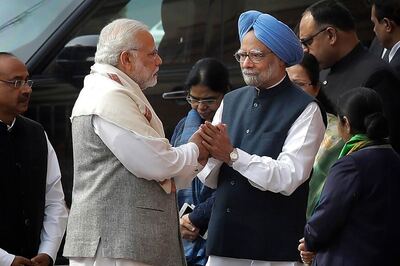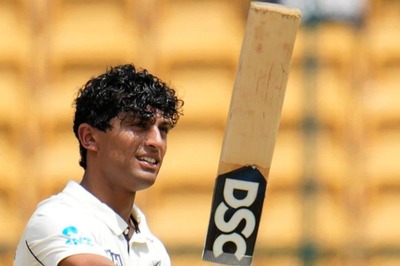
views
Was Mohandas Karamchand Gandhi a feminist?
It is a question that many historians, scholars and theorists have asked over the years. On the one hand, Gandhi's image as the spearhead of women’s participation in the nationalist movement is entrenched in his signature campaigns. The independence icon was a proponent of equality between women and men. He was against women being treated as subordinate to men, and gave several women important political and administrative positions in pre and post-independence India.
It is true that women’s participation in the politics and administration of developing India was largely due to Gandhi’s efforts to project women as the frontline workers of the freedom movement, working shoulder to shoulder with men. But despite these efforts, a fourth-wave feminist reading down of Gandhi's legacy brings to light several aspects of his attitude towards women that can neither be considered progressive in contemporary feminist discourse nor “saintly” as per conservative Indian values.
‘Sexual Experiments’
In his seminal work on Gandhi, historian Ramchandra Guha describes the political ethicist’s relationship with his two grandnieces, Manu and Abha, in the years before his death, and his “sexual experiments” with Manu, who was asked to sleep beside him, naked, inside the same cover while he slept at night. Though the “experiment” alienated many of Gandhi’s close aides at the time, some of whom even wrote letters about it and quit the movement, he maintained that it was meant to test his chastity and commitment to celibacy.
While Gandhi’s experiments with sexuality, lust and abstinence are the subject of another article, the fact that he treated Manu and allegedly other women satyagrahis in his Gujarat ashram as mere tools in his experiments on chastity and sex points to a possible abuse of power. Author and researcher Rita Banerji in her book ‘States and Nationalism: At Home in the Nation?’ accuses Gandhi of exploitation of young women in their teens and early twenties. She talks about the various restraints placed on satyagrahis in terms of sexual code of conduct which he himself was allowed to flout.
“He was a predator. And it is bizarre how this part of his life is such an open secret,” Banerji tells News18. “What he did with these young, impressionable women who looked up to him as a Mahatma was classic abuse of power,” she adds. In a post #MeToo world, how would such conduct be viewed?
The recently published journals of Manu which, according to Banerji, Gandhi himself edited, confirm that she too was part of the “sexual experiments”. However, many Gandhian scholars have defended the practice by calling it “brachmacharya yajna”.
“By including Manu in brahmacharya yajna, Gandhi sought to offer her an equal partnership,” Veena S Howard writes in ‘Gandhi's Ascetic Activism: Renunciation and Social Action’.
Rani of Jhansi vs Sita
In a paper published in the Economic and Political Weekly in 1985, researcher Madhu Kishwar wrote that for Gandhi, “The real strength of a woman was her consciousness of her ‘purity’ and ‘chastity’. This ‘dazzling purity’ could disarm even the most beastly of men”.
She finds it “significant” that Gandhi chose the Sita-Draupadi symbol over the more “situationally relevant” Jhansi ki Rani symbol to signify women’s power and independence. His preference of a certain kind of feminine courage over other types of strengths and heroism, Kishwar writes, is reflective of his “vision” of women that “stressed the superiority of women’s suffering and self-sacrifice rather than aggressive assertion and forceful intervention to protect their interest and gain political power. Sita’s purity of heart and Draupadi’s innate fearlessness saved them from being oppressed by men and thus made them powerful”.
The paper also delves into how Gandhi invokes the image of Sita to deny women their sexuality. He said that “wives should not be dolls or objects of indulgence”, but he also maintained that women should not deck themselves up for the pleasure of men. “There is a touch of the harlot in a woman seeking loveliness by fine dress,” Sita Ranchod-Nilsson’s co-edited book ‘Women, States and Nationalism: At Home in the Nation?’ quotes Gandhi having said.
The Swadeshi Woman
Ranchod-Nilsson’s book gives a wider perspective into the possible underlying reasons behind Gandhi’s perception of women and use of the Sita-Draupadi imagery to evoke women’s unity. In a 1919 women’s meeting speech in Bombay, Gandhi said, “The swadeshi vow too cannot be kept fully if women do not help. Men alone will be able to do nothing in the matter. They can have no control over the children; that is the woman’s sphere. To look after children, to dress them, is the mother’s duty. Therefore, it is necessary that women should be fired with the spirit of swadeshi.”
Gandhi used the “feminisation” of satyagraha and protests as a response to the “masculine” brutality of the British rule. But he ensured that women remained within the domestic sphere. So, while Gandhi pushed for increased women's participation in picketing and rallies, his perception of independent women also relegated them to a domestic mother-wife-sister role and tasks like spinning. In it, he espouses what some researchers have termed “equal but separate”. Is equal but separate really equal?
Twisted Feminism
In her book ‘Sex and Power’, Rita Banerji mentions that Gandhi looked upon menstruation as a distortion of women’s bodies. He referred to prostitutes as “fallen women”, even as he blamed the lust of men for the downfall. “The beast in man has made the detestable crime a lucrative profession,” he said. However, despite prostitution being on the agenda of national reconstruction and purification that he encouraged women to take up, there was no clear plan for rehabilitating these “fallen sisters” except taking up the life of a “sanyasin”.
Many of his views on rape also can be interpreted as victim shaming in today’s context. “It is my firm conviction that a fearless woman, who knows that her purity is her best shield can never be dishonoured. However beastly the man, he will bow in shame before the flame of her dazzling purity,” Gandhi said.
His views on widow remarriage, though progressive, were rooted in asceticism rather than women’s emancipation. While he projected widows as potential flag-bearers of the freedom movement and saw forced widowhood as a curse, Kishwar argues that the push for widow remarriage could have been driven by his severe aversion to unmarital or recreational sex. In his words, it is better that a widow is “married openly” rather than her “sin secretly”.
Gandhi's views on women’s sexuality were also moralistic. Noted developmental psychologist Erik Erikson once said that Gandhi did not believe sexual intercourse could be mutually gratifying between men and women and that it “had to be” an imposition on women by men. Thus, by denying sex to men, women could ensure purity and in turn help men and women both in their struggle for freedom.
But viewing Gandhi through a critical prism does not negate the fact that his staunch opposition to dowry, child marriage and forced widowhood helped create awareness and subsequent abolition of these social ills. His vocal support for man-woman unity and equality at home forged a clearer path for women to take up political and institutional roles in developing India’s public sphere, much ahead of many western countries.
While it is true that Gandhi’s vision for the political emancipation and equality of women spearheaded the women’s rights movements in India, many of his perceptions may stand to be challenged today and call for a deeper introspection of his feminist legacy. Would his views on the domestic role of women despite being independent and free be acceptable to modern, working women? How did the celibacy tests impact the young women living in Gandhi’s ashram? Would Gandhi still view oppression of women as a “moral condition” unaffected by socio-economic factors? While we celebrate Gandhi’s 150th anniversary, these questions remain.



















Comments
0 comment